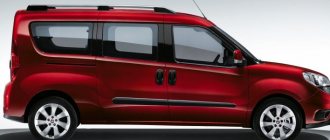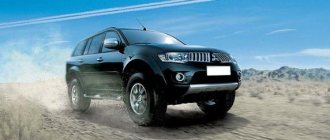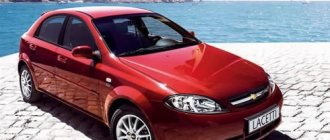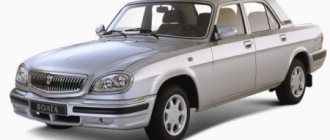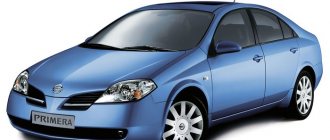UAZ-452 is a Soviet and Russian-made car, on the assembly line since 1966. The car has several body modifications, and is essentially a cargo-passenger van. It is worth noting the fact that the UAZ-452 is the oldest Russian car. It was popularly nicknamed “Loaf”, “Pill”, and the military modification was nicknamed “Tablet”. Depending on the version, the car can be equipped with single-leaf side doors, or there is a version with a double-leaf door at the rear. From 1966 to this day, “Loaf” has not changed structurally. The model is equipped with an all-wheel drive layout and has amazing off-road capabilities.
UAZ Bukhanka injector
Since 1997, the UAZ Bukhanka has been equipped with a ZMZ-4091 injection engine with a volume of 2.7 liters and developing a power of 112 hp. and torque 208 Nm. Compared to carburetor versions, this allowed not only to increase power, but also to significantly reduce fuel consumption, which previously reached 17-20 liters of gasoline per 100 km. The new engine, as before, is mated to a proven four-speed manual transmission, which has been in use for more than 40 years without major changes. Because of the engine, this version of the car is called UAZ 409.
Fuel consumption per 100 km UAZ Bukhanka
- Sergey, Novosibirsk. I bought a UAZ 409 specifically for fishing and hunting - so I drive a RAV 4. So, if I don’t use front-wheel drive and drive on a normal road, then I get no more than 15 liters - quite realistically, no fools. But if offroad and with all-wheel drive, then 20-22 liters are guaranteed. Although my Toyota, if you drive along gullies, doesn’t eat much less, although its cross-country ability compared to Bukhanka is zero at all.
- Nikita, Moscow. I bought the Bukhanka out of necessity - I needed a cargo minibus so that I wouldn’t mind driving around the Moscow region. The consumption is certainly impressive - on the highway 13 liters, in the city no less than 15. I’m not talking about off-road at all, there’s no less than 20, although I practically don’t drive there, mostly on country roads, you can even stick 4 there. I asked my friends and they said that the expense was quite realistic for her, and there was no way she could do less.
- Andrey, Severobaykalsk. My UAZ Bukhanka already has about a hundred thousand miles. Before the run-in, it took about 30 liters off-road and at least 20-22 in the city. After running-in (5500 km), the consumption dropped significantly - now on country roads it’s no more than 20 liters, on the highway, if you drive no more than 80 km/h, the consumption is 13.5 liters. Quite normal for such a car.
- Dmitry, N. Urengoy. I work at Bukhanka - we have this “flying”, we drive the duty team. The car is old, there is zero comfort, but the cross-country ability is excellent. As for consumption, everything is not easy. In fact, for such a car, if you do not connect the front axle, then it is quite acceptable - about 13-14 liters on the highway. But if you go to the tundra, you have to drive in all-wheel drive, and besides, I lower the wheels - there’s no way around it. It turns out that the consumption is 20 or more. Although I filled it with 92nd gasoline a couple of times for the sake of experiment, the consumption is 10-15% lower.
- Pavel, Angarsk. I have been using Bukhanka (UAZ-220695-04) since 2012. In total, I have already driven 20 thousand (I only drive it for work). I like the car because... before that I drove foreign analogues (MMC-Delica). But! There are a couple of points. In addition to the enormous consumption (up to 20-25 liters on a primer), disgusting build quality, no aerodynamics (plus consumption), a bunch of small nuances that irritate. But on the other hand, it can be repaired on the knee with the help of a wrench and such and such (in most cases), it is really passable and, when necessary, it rushes through any dirt.
- Kostya, Barnaul. I work at the medical “Loaf”, city hospital No. 4. They bought us a UAZ under some government program back in 2012. I looked at the passport - it shows the average fuel consumption per 100 km, something like 13 liters. But after six months of operation, I realized that the passport expense has nothing in common with the real one. On the highway, yes, about 13-14 and it works out if you use 92nd gasoline. But in mixed mode, it turns out to be at least 17-18 liters - this is in the summer, and in winter the consumption reaches 19-20. I haven’t driven it off-road, so I can’t say anything.
- Stanislav, Orenburg. We don’t have much traffic jams, so the consumption in the city is not much different from the highway. But the time of year - yes, in the summer I get 14 liters, and in the winter - 16-17, it also depends on how the snow is removed from the yards.
- Ruslan, Ufa. The consumption fluctuated until 12,000, but then settled down. I use 95 gasoline - the consumption is lower and the traction at the bottom is better. In the city in the summer only with the rear axle and without hubs it comes out to no more than 12.5 l/100 km, then on the highway - up to 10 liters. In winter, with two axles, up to 12 liters on the highway, up to 15 liters in the city.
- Edgar, Ulan-Ude. The mileage is almost 4500. The consumption is about 13 liters - I fill up with 70 liters, which is enough for more than 500 km. It was just a little short of this, the consumption was almost 15 liters, but now it has leveled off.
UAZ-452 owner reviews
UAZ-452
With engine ZMZ-402
- Sergey, Nizhny Novgorod region. This is a purely work car for me, for off-road use. The van is capable of kneading dirt, and this is its main purpose. The 2.4-liter engine produces 98 horsepower and consumes an average of 14 liters per 100 km. It's a normal car, I service it myself. I rented a garage space especially for her, and now the car is warm. The car will appeal to those who are familiar with technology and are not friends with official dealerships. I never go on the highway, otherwise the consumption will be cosmic. I’m glad that at least there is support for cheap 92-grade gasoline.
- Yaroslav, St. Petersburg. A comfortable and unpretentious car, very reliable off-road. With a powerful frame structure, equipped with all-wheel drive. The engine produces about 100 horses, and overall I’m happy with the car. There is enough traction reserve at all speeds. It feels like the engine and gearbox were tuned for off-road use. The 2.4-liter engine consumes 14-15 liters per hundred.
- Vladimir, Tomsk. The UAZ-452 is a worthwhile car if you know how to use it and not just buy it for a collection. The main advantage is, of course, all-wheel drive and all-terrain ground clearance, and the high-torque 2.4-liter engine consumes 14 liters of 92-octane gasoline.
- Oleg, Kursk. A good car for every day, I'm quite happy with it. At work they provided me with exactly this car, with a mileage of 90 thousand and all-wheel drive. In the city it consumes 15 liters, which is generally not bad. You can also install an HBO.
- Dmitry, Dnepropetrovsk. The loaf was produced in 2000, currently has 130 thousand km on it. The van is not suitable for every day, there is no handling at all. Off-road is a different matter. Now he is at the dacha, serving me there faithfully. Consumes 92 gasoline, in the combined cycle it produces 13-14 liters.
- Nikolay, Donetsk. I'm happy with the car, I've had it since 1992. Manual transmission, rear-wheel drive in the old fashioned way. I bought a Loaf to deliver goods to difficult to navigate places. The UAZ brings me profit, and therefore is an indispensable car. If something breaks, it can be replaced inexpensively. A gasoline engine consumes 14-15 liters.
With ZMZ 409 engine
- Igor, Novosibirsk. Overall I'm happy with the car, I praise it for its unlimited off-road capabilities. The car will pass where it would be a pity for a foreign car. Even if it breaks, the loaf will still be on the move, and spare parts are cheap. Consumption 17 liters.
- Dmitry, Kazan. The UAZ-452 is a serious car; it consumes an average of 15 liters per 100 km. The 2.7-liter engine does not impress with power, but has a good reserve of traction.
- Yaroslav, Petrozavodsk. I bought a loaf of bread in the back of a passenger van, I work in one of the outback villages - I take local residents to difficult places. There is a private garage where you can spend hours. With a 2.7-liter engine, all-wheel drive and manual transmission, gasoline consumption is 15 liters per hundred. You can fill in 92nd gasoline.
- Maxim, Murmansk. Not a bad off-road car, reliable and unpretentious if you use it correctly. Of course, breakdowns happen, but they do not affect the overall impression of the car. What was needed was a simple and cheap device to remove dirt and nothing else. And for the city I have a car. The loaf consumes 15 liters per hundred km.
- Victor, Novosibirsk. I'm happy with the car, I'm repairing it in my garage. I stock up on tools and spare parts; you could say I have my own workshop. The 2.7 engine is capricious and sometimes troits. It consumes from 10 to 15 liters off-road, depending on the load and driving style.
- Sergey, Krasnoyarsk. The car is 2002, the mileage is under the table. I use it purely off-road, that’s where this loaf belongs. The car is just right for our conditions, it starts up perfectly and smoothly jumps over gullies and other potholes. The car's off-road arsenal is amazing - it has a low-range range, all-wheel drive, engine protection, a powerful frame, etc. The car is not for the city or the highway. His element is snowdrifts and real off-road conditions. Only the engine is sometimes not enough, it produces 100 horses and consumes 15-17 liters.
- Alexey, Lipetsk. I liked the car, I use it every day off-road. If something breaks, the bumper cracks or something else, you don’t have to worry about it. The service at the loaf is excellent. In extreme cases, you can buy something at a disassembly site - they will sell it for pennies. Average consumption is 14 liters, the 2.7 engine produces 100 horsepower.
- Mikhail, Vorkuta. A wonderful car, very cheap to operate. The main costs are only for fuel. The engine doesn’t seem to be particularly powerful, but it consumes excellent fuel – sometimes it requires 20 liters. I drive purely off-road, in these conditions the loaf is like untouchable, a real rogue.
- Rinat, Arkhangelsk. A good car for the money, designed purely for off-road use, and I like it. I rarely go into the city, and even more so on the highway. This beast has no place among people; I only ride it along rivers and fields. Consumption is 15 liters on average.
- Pavel, Nizhny Novgorod. I'm happy with the car, an excellent SUV for every day. I use it in the city in winter conditions. The 2.7 engine starts with half a turn and consumes from 12 to 16 liters per hundred.
UAZ-2206
- Vasily, Tomsk. Not a bad car, I won’t judge strictly. I bought it in 2000 and still use it today. Around the city, off-road and even on the highway. The maximum speed is under 100 km/h, the flight is normal. Now the mileage is 163 thousand km, consider half of the engine's life has already been completed. By the way, the engine consumes 14-15 l/100 km.
- Vladislav, Nizhny Novgorod region. I liked the car, it has enough advantages. A great car for every day off-road, it doesn’t get boring at all. Unpretentious off-road, with a powerful frame and suspension. Consumption up to 15 liters per 100 km.
- Sergey, Alexandrovsk. The car is in the basic version, with a 2.4 liter engine. Supports 92 gasoline. We have been with this old man for more than 20 years, the car drives properly and pleases with its wonders on the off-road. The car was created with an eye to the harshest conditions. Unfortunately, there is no compromise in the car; it is designed exclusively for off-road use. Handling is at the lowest level, the steering wheel is empty and clumsy, very thin and with a large diameter. The pedals are uninformative, there is no safety at all. What city has these parameters? I'm surprised some people still drive around town in this trough. The 2.4-liter engine consumes 13-14 liters.
- Yaroslav, Perm. I bought an SUV in the back of a cargo-passenger van, taking passengers home after a long day of work. The car was created for harsh conditions, that's why I took it. The 2.4 engine consumes 14 liters per 100 km. Expenses go mainly to gasoline, maintenance is inexpensive.
- Dmitry, Ekaterinburg. A car for all occasions, at least in off-road conditions. I rarely go to the city, unless absolutely necessary. I drive quietly, leisurely. The loaf amazes with its off-road capabilities; by the way, I have a version with a 2.4-liter engine, the average consumption is 15 liters.
- Oleg, Ekaterinoslavl. I liked the car, despite many design flaws. There is no comfort, no controllability, no reliability. I use it for household needs. Average gasoline consumption is 14 liters per hundred.
- Dmitry, Vorkuta. A wonderful car, the best rogue in this price category. The main advantage of the loaf is its geometric cross-country ability. I don't argue that the car is from a different time, but it still has potential. Equipped with a 2.4-liter gasoline engine with a capacity of about 100 horses. Consumes 13-14 liters.
UAZ-3741
- Sergey, Moscow region. The car is 2005, mileage is 150 thousand km at the moment. I use it all the time, the car is very durable. I have a glass van version with a 2.4 liter engine. It's a high-torque engine, so I immediately installed HBO on it. Average consumption is 13 liters of 92 gasoline. The car is worth the money. Not modern, perfect for off-road use. A powerful frame, large suspension travel and high ground clearance – it is not afraid of curbs.
- Oleg, Chelyabinsk. I'm happy with the car, I have the van version. Large cargo compartment, you can load anything there - the suspension will hold up. In addition, there is all-wheel drive, so you can move on serious off-road conditions, this is also facilitated by short body overhangs and high ground clearance. For all its disadvantages, the loaf seems ideal to me. All-wheel drive decides a lot, consumption is 14 liters.
- Daniil, Irkutsk. This was the best option for me, in terms of price and capabilities. In terms of cross-country ability, the Bukhanka is definitely better than the more modern Gazelle, and also costs less. It is equipped with a 2.4-liter engine, with an average consumption of 14 liters/100 km.
- Alexey, St. Petersburg. A very comfortable car, I didn’t even expect it. For 400 k you can get all-wheel drive, fancy off-road capabilities and high ground clearance. The car will never drown in snowdrifts, there is no doubt about it. The 2.4-liter engine has enough thrust everywhere, and the main thing in a loaf is not speed. Consumption 12-14 l.
UAZ-3909
- Semyon, Alexandrovsk. I have a combi version - a combined van plus a passenger minibus. A universal car, I use it every day. Delivers incomparable driving pleasure, all-wheel drive gives the car good handling. Feels connected to the wheels. I didn't expect this from a loaf. I have a 2021 version of 3909, now the mileage is 100 thousand km. The 2.7-liter gasoline engine consumes 13-14 liters per hundred.
- Dmitry, Voronezh region. The car is certainly not for every day, but it fully justifies its purpose. Equipped with a 2.4 engine, supports 92 gasoline. Costs go mainly to fuel, since spare parts are cheap. Average consumption is 13 liters/100 km.
- Ivan, Stavropol region. I took a used loaf, with a 2.7 engine, in the back of a glass van. I didn't like the car, it breaks down constantly. I thought I would save money, but it turned out as always. Consumption up to 15 liters.
- Alexander, Peter. This car came in handy for transporting fruits and vegetables. I load the car to the fullest. The suspension can withstand everything, consumption is 15 liters with a 2.7 engine.
- Igor, Rostov. I'm happy with the car, I bought it on the secondary market. The 1999 version, with a mileage of 198 thousand km. Almost all parts were replaced, including the gearbox, suspension and even some engine parts. They gave it to me for next to nothing, the car is solid and reliable. Hardy off-road, with large suspension travel. Consumes from 12 to 14 liters per hundred.
- Yaroslav, Perm. I'm happy with the car, although there are a lot of shortcomings. The car is truly universal - I listened to the advice of experienced owners and bought it for off-road use. The 2.7-liter engine pulls out at low revs like a diesel. Consumption 13-14 liters.
UAZ 3962
- Dmitry, Ekaterinoslavl. Good old loaf. We have had it since the times of the USSR. The car was produced in the late 1980s, and now has 192 thousand km on it. This ambulance saved thousands of lives. Of course, we gradually modernized it and installed modern equipment. Structurally, nothing has changed. The car is equipped with a 2.7 engine, it has good elasticity and acceleration. Gasoline consumption in the city is on average 13-14 liters.
- Alexander, Leningrad region. The machine is impressive, our employees are happy with it. Adjusted for age, of course. Quite a dynamic car, light and easy to operate. Easily repaired. As a sanitary car, the loaf performs its duties perfectly. Of course, such a bucket will no longer work for severe patients. Consumption is 14 liters per hundred.
- Valery, Smolensk. The car has been in our sanitary service since the late 1980s, and has not yet been written off. We service it regularly while it's still running. The 2.7 engine consumes 13 liters.
- Vasily, Sverdlovsk. The ideal ambulance for its time. There is nothing superfluous in it. Comfortable, roomy and with the necessary equipment. Unfortunately, the suspension comes from a cargo van, which means comfort suffers. But in general, you can drive - the transport from point A to point B behaves with dignity. In the urban cycle it consumes 12-14 liters. The machine is still in service and is used daily. Of course, before each departure we check the technical condition.
UAZ-3303
- Yaroslav, Penza. Great truck for the money, used daily. It was provided to me by a freight company back in the early 1990s. Thanks to all-wheel drive and high ground clearance, the loaf is capable of driving on any road, including deep ruts. Off-road is the element of the UAZ. You can load anything into the flatbed body, even coal and other heavy objects. The suspension will withstand everything, you don't have to worry. The 2.4-liter engine consumes 10-14 liters per 100 km.
- Dmitry, Kazan. The machine suits me and fulfills its duties. Reliability is at a high level, the main thing is just not to forget to check the technical condition before each trip. The car is not suitable for branded service; driving there every day will be exhausting. You need to have your own garage, or better yet, service it at the work place where this car was provided. UAZ-3303 is my own car, I bought it for my money. I work as a freight forwarder. UAZ consumes 14 liters of 92 gasoline per 100 km.
- Oleg, Minsk. I work as a loader, transporting pallets. My UAZ is still alive - it hasn’t been written off yet. Still on the move, sometimes you have to repair it right in the middle of the road. But it’s okay, work is work. The engine with a volume of 2.4 eats 12-14 liters.
- Victor, Saratov. A worthy representative of the Soviet automobile industry, a simple and unpretentious car, universal, copes with the functions of an SUV and a truck perfectly. Consumption 15 l.
- Alexey, Tyumen. I'm happy with the car, for all occasions. The universal truck is quite compact, and at the same time has a decent load capacity. In the city it consumes 15 liters, on the highway it reaches 12 liters.
- Nikolay, Stavropol region. UAZ-3303 is a reliable SUV, I have a version with a flatbed body. It can withstand any load, the suspension is omnivorous and indestructible. Robust frame, high ground clearance. The car is designed for off-road use, it is a durable and comfortable car. I'm renovating in my garage. Now I’ll go again, they brought me another stack of spare parts from disassembly. Gasoline consumption for the 2.7-liter engine is 14 liters.
Types of available power plants
Over the entire period of its existence, “Loaf” has been subject to updates and improvements from the manufacturer more than once. The car was successfully equipped by UMZ and ZMZ with power plants, which, like the car itself, were modified and improved more than once. In 2021, the model underwent another modernization and received a new designation - UAZ 2206. The classic version of the engine line is the UMZ 421 engine. This is a standard “four” with an in-line cylinder arrangement. This engine can hardly withstand overheating, so it is believed that ZMZ units are more reliable in terms of service life and resistance to adverse operating conditions.
For a long time, the “Loaf” was equipped with a ZMZ 409 engine, which became a continuation of the ZMZ 406 installation, which was somewhat outdated in technical terms. Today, production of a car with an injection 406 engine has been launched. The installation is undergoing a major overhaul, and the potential resource is more than 300 thousand kilometers. Excessive fuel consumption by the engine is possible in cases where minor or serious malfunctions have occurred in the car system. But in good condition, excessive consumption of fuel and oil was not noticed with this engine. There are cases when drivers complain about the “gluttony” of the engine, but it is more likely that the nature is isolated rather than widespread.
Engine parameters
Throughout its production history, the UAZ 409 has been repeatedly modernized, only the classic body has remained unchanged. The main area of improvement is power plants. The latest changes occurred in 2021, when a loaf with code UAZ 2206 was released.
The most common engine in the line is the UMZ 421 power plant. These are 4 cylinders arranged in a row. The disadvantage of this type is its poor resistance to overheating, so experienced owners recommend taking a closer look at ZMZ motors as they are more reliable and resistant to adverse conditions. Such an engine consumes around 15 liters of fuel per hundred.
For a long time, loaves were equipped with ZMZ 409 units, which appeared as a result of the modernization of ZMZ 406. The latter was also modernized - a fuel injection system was added, and design changes increased the service life to 300 thousand kilometers.
All these power plants are not characterized by an increased “appetite” for oil and gasoline, which can only occur in the event of significant malfunctions.
Modifications of UAZ-452
In addition to the basic modification 452 with a van body, other versions of this car were produced:
- The UAZ-452A ambulance, nicknamed the Tablet, is equipped with four recumbent seats or 11 seats. The main difference is increased cross-country ability. The UAZ-452AS version was used for the northern regions.
- UAZ-452AE is a van for installing specialized electrical equipment.
- The UAZ-452V military bus can accommodate 10 soldiers in full gear.
- UAZ-452D is an onboard truck with a double cabin.
- The UAZ-452K version is a three-axle bus with 16 seats, the fuel consumption of this Bukhanka modification is higher than that of others, an experimental model.
In 1985, the cars were modified, after which their indexing changed. The most popular versions include:
- The UAZ-2206 minibus with all-wheel drive is now available with ABS and power steering.
- Version 3909 is a “Farmer” van with three side doors and a double door on the rear wall. The fuel consumption rate of the UAZ-3909, along with its unpretentiousness and high cross-country ability, makes it popular among a huge number of motorists. Fuel consumption for modifications of the UAZ-390995 with the same body was reduced by installing an injector.
- The UAZ-3909i modification is a variant of a military ambulance.
- DISA-1912 “Zaslon” is a vehicle manufactured by the Ulyanovsk Automobile Plant with additional armor for the collection and transportation of material assets.
Fuel consumption of UAZ “Bukhanka”
The Soviet SUV more than once made car enthusiasts think about the fuel consumption of the UAZ Bukhanka 409 per 100 km. The famous UAZ “Bukhanka” saw the world in 1965 at an automobile plant in the city of Ulyanovsk, Russian Federation. Then its serial production began, and its assembly has not stopped to this day. In Soviet times, this SUV was one of the most common and today it is the oldest Russian car in terms of the total number of years of production.
UAZ is a cargo-passenger version with two axles and four-wheel drive.
The car was originally designed for easy driving on difficult roads, adapted to our operating conditions, and is one of the most affordable options for buyers. This name for the UAZ car comes from its resemblance to a loaf of bread.
Today the UAZ is produced in two versions:
- body;
- onboard version.
| Engine | Consumption (highway) | Consumption (city) | Consumption (mixed cycle) |
| 2.5 | 13.2 l/100 km | 15.5 l/100 km | 14.4 l/100 km |
It has almost a ton of cargo capacity and can be equipped with multiple rows of seats or a spacious bed. The UAZ minibus, about 4.9 m long, has two single-leaf doors on the sides of the body, one double-leaf at the back, and the number of passenger seats from 4 to 9. According to the technical passport, the car can accelerate to 100 km/h and has a maximum speed of 135 km/h.
This is interesting: How much oil is in the front axle of a Chevrolet Niva
UAZ Simbir
In 1999, the design department of the Ulyanovsk Automobile Plant came up with the idea of taking the popular wheelbase from the 3160 model and increasing it by a significant 360 millimeters. The result of this experiment was the appearance of the UAZ-3162 Simbir SUV. By increasing the wheelbase parameter, the company's representatives achieved a chic effect - the new product did not look like an “ugly duckling” in the family of cars.
It was immediately decided to put the new model into production. And just a few years later, Simbir became a full-fledged replacement for its predecessor with a short platform.
| Engine | Consumption (city) | Consumption (highway) | Flow (mixed) | Fuel type |
| 2.7 MT 128 hp (Mechanics) | — | — | 10,4 | Petrol |
It is worth noting that the spring of 1956 was marked for the Ulyanovsk Automobile Plant with an order to carry out design work that would make it possible to create completely new cars. Among them were supposed to appear cargo and medical transport, a minibus, and also a van. The design department managed to develop a technology that had not previously been used by any automaker, which implied the location of the cabin above the engine. This made it possible to significantly increase the volume of the body while keeping the length of the car at the same level.
In the summer of 1985, the company carried out modernization for the first time: all models changed their indices, larger lights were installed, a separate brake system appeared, the hydraulic clutch drive was significantly lighter, a heater with greater power was installed in the cars, as well as an anti-dazzle rear view mirror.
Currently, UAZ continues to develop its own automobile line, introducing new models to consumers almost every year. It is worth noting that in 2013 the company managed to increase export volumes by a third, thereby demonstrating the high quality of its products.
Statistics
The ZMZ 409 car can be equipped with both an injector and a carburetor. It can reach speeds of up to 135 km per hour. Its power is provided by more than one power plant. Their characteristics:
- ZMZ-402 2.5 liter with 72 horsepower.
- ZMZ-409 with 2.7 liters and 112 horsepower.
The manufacturer indicates its fuel consumption standards for the UAZ Bukhanka 409 with an injection engine. A significant upward deviation in fuel consumption from the norm requires immediate contact with service station specialists.
The passport for the UAZ states that the fuel consumption of a UAZ minibus when driving around the city, on the highway and in mixed mode does not exceed 13 liters.
In fact, the average gasoline consumption on the highway is 13.2 liters, in the city - 15.5, and mixed - 14.4 liters. In winter, accordingly, these indicators increase.
List of internal combustion engine modifications
The manufacturer includes six versions of the 409 engine family.
The base engine is 409.10 for Euro-2 standard with 143 hp. s., compression ratio 9, torque 230 Nm. The ignition is modular with a bunch of high-voltage wires, there is a throttle sensor.
ZMZ 409.10
The improved modification 40904.10 differs from the previous version in the ignition system - an individual coil for each spark plug, there is no TPS here, instead a throttle unit is used to ensure Euro-3. There is an automatic alternator belt tensioner, which is not provided in 409.10.
ZMZ 40904.10
Modification 40905.10 has standard characteristics and is intended for Hunter, Patriot SUVs and Cargo trucks, Pickup trucks manufactured by UAZ.
ZMZ 40905.10
Engine 4091.10 is considered derated with Euro-3 safety standards. Has a power of 112 hp. pp., installed on UAZ 462 Tablets and Loaves.
The power drive marked 40911.10 has a torque of 219.5 Nm and a power of 125 hp. With. Complies with Euro-4 regulations, designed for all-wheel drive UAZ trucks with a 4x4 formula (not switchable).
ZMZ 40911.10
Motor 4092.10 was not included in the series; it was created specifically for the GAZ Volga and UAZ 3160 (all-wheel drive SUV). Torque is around 225 - 235 Nm, power is about 135 - 138 hp. With.
ZMZ 4092.10
From the factory, the engines had only the most necessary attachments, without power steering and other things. The automaker already equipped them with this equipment on the assembly line. The timing mechanism uses different camshafts:
- 40904 and 4905 the profile of the cams of the intake and exhaust shafts is the same, lifts the valves by 9 mm;
- 40911 the cam profile is different, the lift is 8 mm on the intake and 9 mm on the exhaust.
Valve springs can be used from the VAZ-2108, since they are interchangeable on all ZMZ 409 models.
What you can do yourself
With the problem of high gasoline consumption, it is recommended to contact specialists at a service station. But , you can also improve (reduce) the indicators yourself.
Just follow these tips:
- Monitor the pressure in the UAZ tires. Remember that the pressure in the rear wheels should be slightly higher than in the front.
- Try calibrating the on-board computer.
- Choose gasoline. Don't forget that price equals quality. The low cost of an unknown brand does not ensure high quality fuel; choose trusted companies.
- Check spare parts regularly. Timely replacement of the oxygen sensor and air filter reduces fuel consumption by 15%.
- Make optimal use of the air conditioner, heater, etc.
A technical feature of the UAZ car is that it is equipped with 2 tanks. While driving in the first kilometers, you can notice how the fuel level drops sharply, and over time it increases sharply. Why? The system pumps gasoline from the main tank to the secondary tank. There is only one piece of advice here - fill the entire fuel volume of the UAZ tank as much as possible.
By putting all these tips into action, drivers can significantly improve the performance of their vehicle.
Minibus modernization
In accordance with its intended purpose, the UAZ Bukhanka initially had all-wheel drive with a 2-speed transfer case, a ground clearance of 220 mm and a ZMZ-402 gasoline engine (it was a modernized model of the GAZ-21 engine). But, after a while, the UAZ minibus was partially improved.
In 1997, the UAZ Bukhanka was modernized and a 2.7-liter ZMZ-409 injection engine was installed.
This model has higher power. Like its predecessor, this engine is coupled with a 4-speed manual transmission. Fuel consumption for a UAZ Bukhanka with a carburetor engine will be different. If there is a carburetor, fuel consumption per 100 km is slightly higher.
In 2011, another modernization of the car took place, it was added:
- Power steering.
- A new power plant, which has been brought up to Euro-4.
- Engine according to new standard.
- New type of seat belts.
- Safety steering wheel.
Euro 4
This is a unified environmental standard that regulates the content of harmful substances in exhaust emissions. Feature: fuel consumption on the UAZ Buhanka 409 is reduced per 100 km with the help of installed special catalytic converters.
How to set up
Now we can move on to the issue of adjusting the K126G carburetor.
The task is not the most difficult. Especially for those who have already dealt with other carburetors.
Before you set up this K 126 series carburetor marked G on your own, you need to know why this is being done at all. Adjustment is used in situations where it is necessary to eliminate a malfunction in the system. The event is also held with the aim of increasing the productivity of the device.
Self-adjustment of the K126G carburetor under study can be carried out according to various parameters, including fuel consumption:
- stabilize the operation of the accelerator pump;
- set the minimum parameters for idle speed;
- check the quality of connections in the carburetor unit;
- reduce fuel consumption depending on the operating mode;
- raise or lower the maintained constant fuel level inside the float chamber;
- check the efficiency and effectiveness of the response when activating the economizer;
- adjust the throughput on the jet side.
It is important to consider that adjustments to any of these parameters are always carried out only when the engine is turned off.
Depending on the situation, you may need to wait until the engine cools down completely. In other cases, on the contrary, work on a warm engine and check that the settings are correct.
Most often it is necessary to regulate the flow of a mixture consisting of fuel and air.
One of the key advantages of the K126G carburetor is that it is not necessary to disassemble the entire structure for adjustment. All necessary activities can be performed by simply lifting the hood.
Flow adjustment
Since in the case of the K126G it is mainly necessary to adjust fuel consumption, it would be logical to start studying the carburetor and its settings from this point.
There are 2 small screws on the device body. Each of these screws is responsible for controlling the supply of mixture to the engine cylinders. And these are quality screws.
If you look from the side near the throttle valve drive, there will be another screw installed there. This is already a quantity screw. Its main task is to provide the required volume of fuel that enters the engine for subsequent mixing and combustion.

